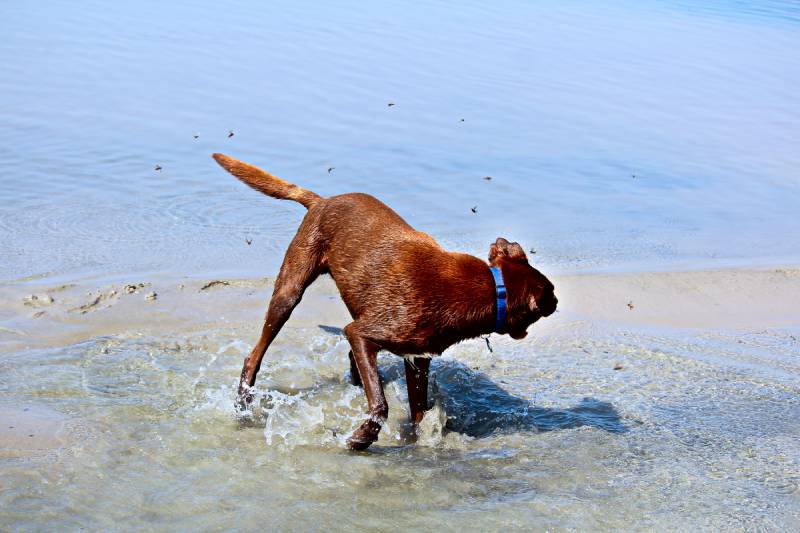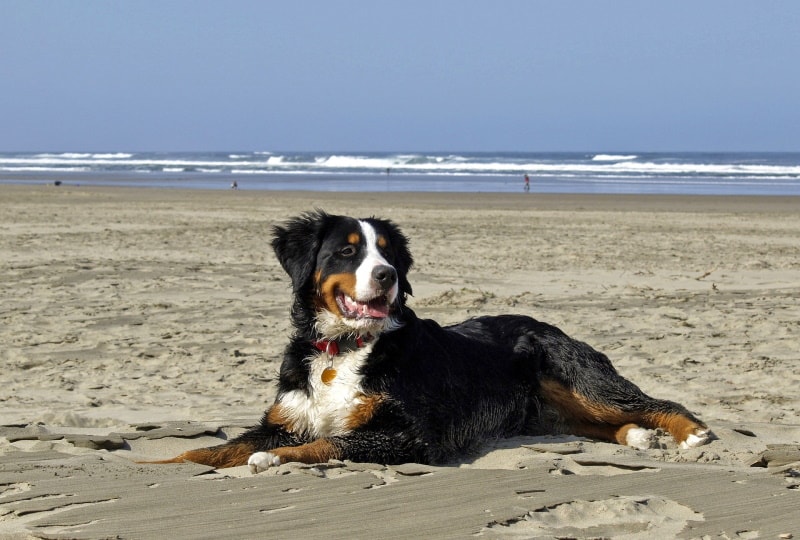How to Get Snow Off a Dog’s Fur and Paws: 11 Expert Tips

Updated on
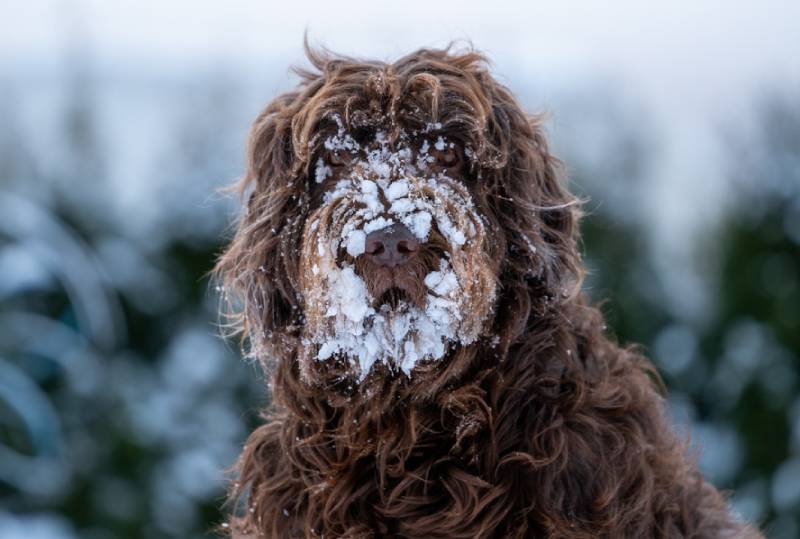
Click to Skip Ahead
Winter is a magical time with fun activities like skiing, skating, and sledding. Unfortunately, it can also be a challenging time for dog owners. One of those challenges includes removing snow from a dog’s fur and paws. While there are many ways to get the snow off, not all methods are safe, especially in cases involving injury. Here are our expert tips to help you deal with dogs and snow looking at how to get the snow off and how to prevent it in future.
The 11 Tips to Get Snow Off a Dog’s Fur and Paws
1. Get the Right Tools
Before attempting to remove snow from your dog’s fur and paws, ensure you have the right tools. These include a soft-bristled brush, a metal comb with round tips, scissors, and a hairdryer. You can also get a paw washer, a towel, and a dog-safe deicer solution.
2. Brush Your Dog’s Coat
Before taking your dog inside, brush their coat thoroughly. This will remove any loose snow or ice from their fur and make it easier to remove any accumulated snow once you’re back inside. Grooming your dog’s coat regularly can also help prevent matting, which makes removing snow more difficult.
3. Use a Paw Washer
If snow accumulates on your dog’s paws, use a paw washer to remove it quickly. This is a device that looks like a bucket with bristles on the inside. Add warm water, swirl your dog’s paws around, and the bristles will remove snow or ice.
4. Rinse and Dry the Coat and Paws Thoroughly
After using the paw washer, rinse your dog’s coat, paws, and pads thoroughly with warm water to remove any remaining salt or de-icer solution. Then use a towel to dry them as much as possible, followed by a hairdryer on low heat.
When using a hairdryer to melt the ice, keep it at least 6 inches from your dog’s skin. Start on the lowest possible heat setting and gradually increase until you reach a comfortable level for your dog. Keep the hair dryer moving so as not to burn them and be aware of any signs of distress. If your dog seems anxious or uncomfortable, stop and use a different method to remove the ice.

5. Trim Matted Fur
Snow can easily cause mats in longer fur, and mats can make it harder to remove snow from the fur. If your dog’s coat has mats or tangles, gently untangle them with a metal comb with a round tip. If the mats are too tight to separate, use scissors to cut them out carefully.
6. Check for Signs of Hypothermia
Check for signs of hypothermia if your dog spends an extended period outside in the snow. These include shivering, lethargy, disorientation, and pale or blue gums. If you notice any of these in your dog, it’s vital to immediately bring them inside and wrap them up in a warm blanket. Then, contact your vet to seek medical assistance.
7. Keep Up With a Grooming Routine
Grooming is an essential, albeit easy, to ignore part of caring for your dog year-round, but it’s especially crucial during the winter months when their fur is more likely to mat or tangle. Regular grooming will help prevent mats, remove loose hair, and make cleaning snow from your dog’s coat easier.

 What to Do to Keep Snow Off Your Dog in the Future
What to Do to Keep Snow Off Your Dog in the Future
8. Dress Your Dog in Appropriate Gear
It’s important to dress them in appropriate winter gear to keep them warm, including a waterproof jacket and booties. You can also use a snood or scarf to cover your dog’s head and neck.
9. Use Paw Balm
Exposure to snow and salt can cause your dog’s paw pads to become dry and cracked. To prevent this, use paw balm before going outside. Apply a thin layer of balm to your dog’s paw pads, which will act as a barrier, protecting them from the elements.
10. Avoid Using Salt
Salt is a standard deicer solution used on sidewalks and roads to prevent slipping. However, it can be harmful to your dog if ingested and can also cause irritation and dryness on your dog’s paws. Instead, use a dog-safe deicer solution or sand to provide some traction on icy surfaces.
11. Monitor Your Dog’s Behavior
Dogs are resilient and may not show distress or discomfort in icy or snowy conditions. Therefore, it’s essential to monitor your dog’s behavior while outside and ensure that they do not show pain. This includes limping, whining, or seeking shelter.
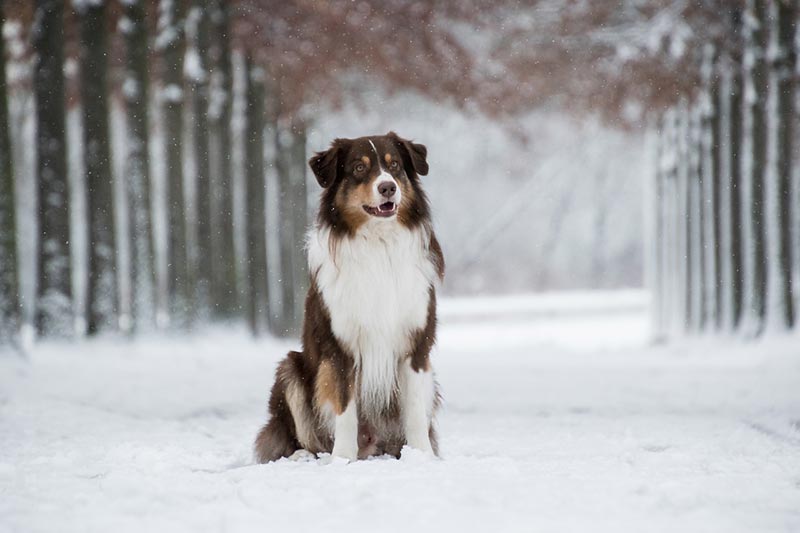
Dangers of Snow and Ice on Your Dog’s Fur
Snow and ice can be dangerous for your dog if improperly handled. Not only can exposure to snow and ice cause dryness and irritation on their skin, but it can also quickly turn into more severe issues such as hypothermia and frostbite. If left untreated, these conditions can lead to suffering and health problems for your pet.
Signs of Frostbite in Dogs
Frostbite can occur if a dog is exposed to freezing temperatures for too long. Watch your dog closely for signs of frostbite, such as pale or blue gums, lethargy, disorientation, and patchy fur.
Look for the following signs in your dog if your dog has more ice on their paws than usual or if the temperatures are lower than expected:
- Shivering or trembling
- Pale, gray, or bluish skin
- Swelling of the affected area
- Pain when touched
- Skin that feels cold to the touch
- Blisters and scabbing in severe cases
If you suspect your dog has frostbite, immediately take them to the vet. Frostbite can cause severe damage if left untreated. Your vet will be able to provide medical treatment and help your dog recover from frostbite as quickly as possible.
Signs of Hypothermia in Dogs
Hypothermia in dogs is more prominent during the winter months. This occurs when a dog’s body temperature drops below average due to exposure to cold weather. Hypothermia is dangerous, and in severe cases, it can be life-threatening.
- Shivering
- Lethargy
- Weakness
- Disorientation
- Loss of appetite
- Slow or shallow breathing
- Low heart rate
- Dilated pupils
- Stiff muscles
In moderate hypothermia cases, a dog’s body temperature may drop to between 90–99°F. In severe cases, it can drop below 90°F, and the dog may experience respiratory distress, coma, or cardiac arrest.
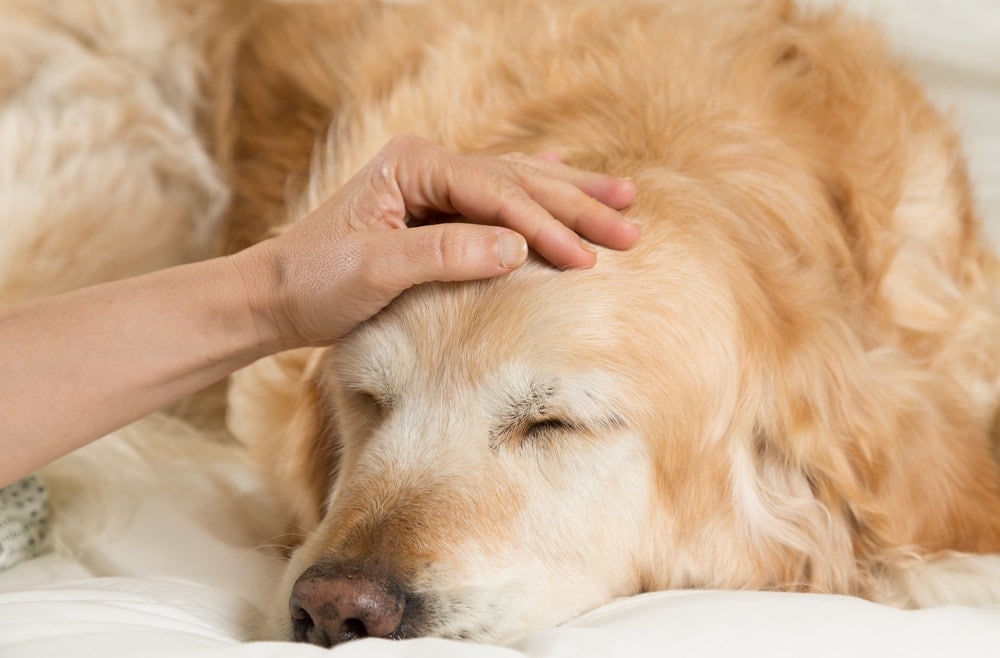
Factors that Increase Susceptibility to Hypothermia and Frostbite
Certain factors can make dogs more susceptible to hypothermia and frostbite.
- Breed: Smaller breeds, such as Chihuahuas, Yorkshire Terriers, and Shih Tzus, and breeds with short hair, such as Greyhounds, Dobermans, and Boxers, are more prone to hypothermia and frostbite.
- Age: Puppies, seniors, and dogs with weaker immune systems are more vulnerable to hypothermia and frostbite.
- Weight: Thin or underweight dogs have a higher risk of developing hypothermia since they have less body fat to help regulate their body temperature.
- Environment: Dogs who spend most of their time outdoors or in drafty, unheated areas are more susceptible to hypothermia and frostbite.
Prevention of Hypothermia and Frostbite in Dogs
There are several helpful steps dog owners can take to prevent hypothermia and frostbite in their dogs.
- Keeping your dog indoors during cold weather
- Dressing your dog in appropriate winter clothing, such as a waterproof coat or booties
- Providing a warm, comfortable sleeping area
- Limiting your dog’s exposure to outdoor activities during extreme weather conditions
- Providing a heated dog bed or blanket
- Monitoring your dog’s behavior for signs of hypothermia, such as shivering or lethargy
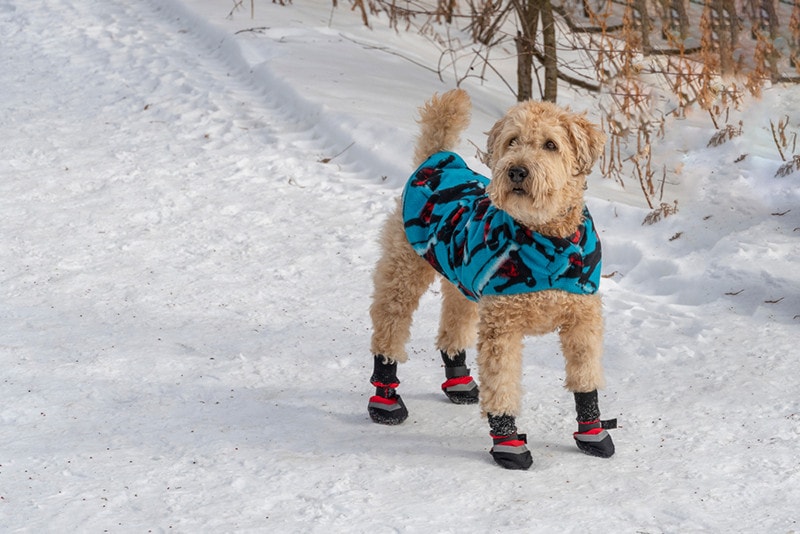
FAQ: Dogs and Snow
Is walking on ice and snow dangerous for my dog?
As long as the walking surface is stable and your dog wears a pair of booties, walking on snow and ice should be fine for your dog. If not, the icy surface may cause cuts or scrapes on your dog’s paws.
How can I protect my dog’s paws from the cold?
The best way to protect your dog’s paws is to purchase a pair of waterproof, insulated booties. These will provide a barrier between the icy surface and your dog’s feet while keeping them warm.
Should I wait for the ice to melt on its own?
Small amounts of snow and ice on your dog will melt once they come indoors, but removing the ice may be necessary if the snow is packed on or if you suspect hypothermia or frostbite. Use warm water and a towel to gently remove the ice, then take your dog to the vet for further treatment.
Can I pour warm or cold water to melt the snow on my dog?
No. Pouring warm or cold water on your dog could cause further damage to its skin. Additionally, once you pour water on the dog, it will cool quickly, lowering its temperature.
What do I do if my dog slips on ice?
If a pup has slipped and is injured, in some cases, you can treat minor falling injuries. First, ensure your dog is warm and out of harm’s way. Then, apply pressure to any cuts or scrapes with a clean cloth. Finally, contact your vet for further instructions. It’s always better to seek medical advice from a qualified vet than to risk your dog’s suffering.
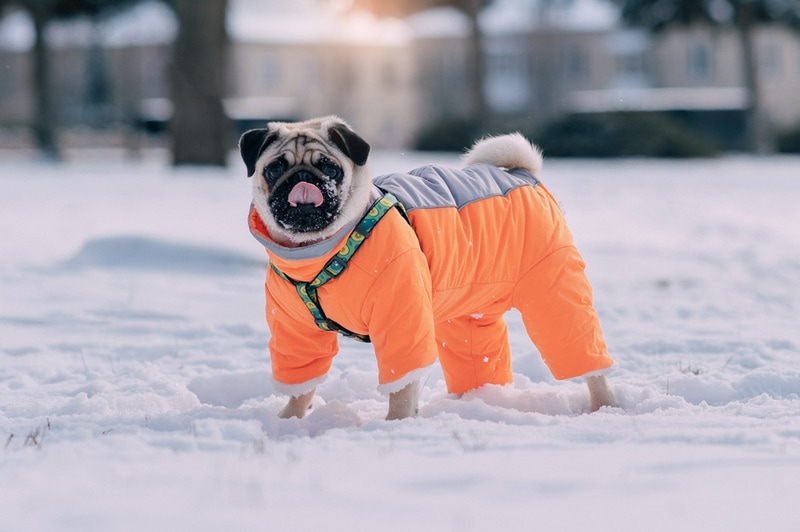
Conclusion
Hypothermia and frostbite can be severe for dogs, especially if they’re not treated swiftly. However, by taking a few simple precautions, pet owners can help protect their canine companions from the cold and keep them safe during winter. Always supervise well – keep an eye on your pup outdoors and dress them appropriately for the weather. And if you suspect any signs of hypothermia or frostbite, make sure to take them to the vet right away.
Featured Image Credit: Chamois huntress, Shutterstock

 What to Do to Keep Snow Off Your Dog in the Future
What to Do to Keep Snow Off Your Dog in the Future
